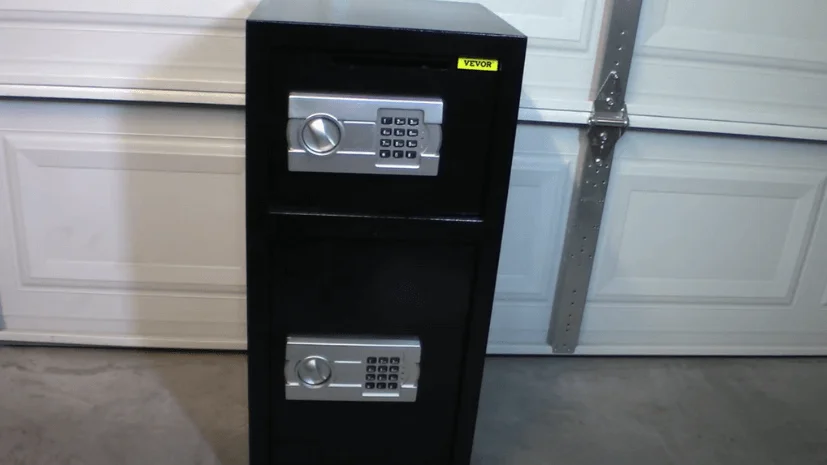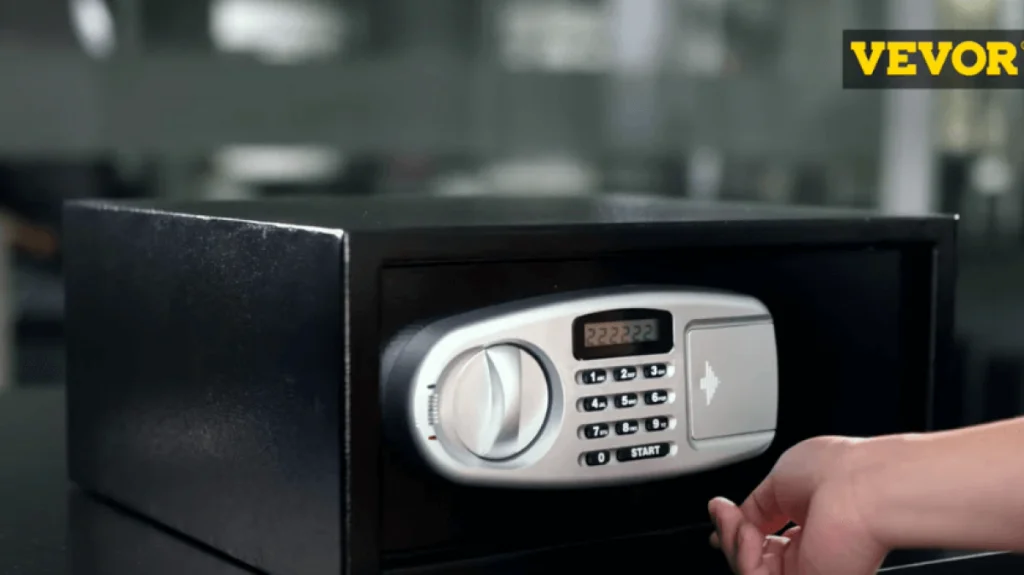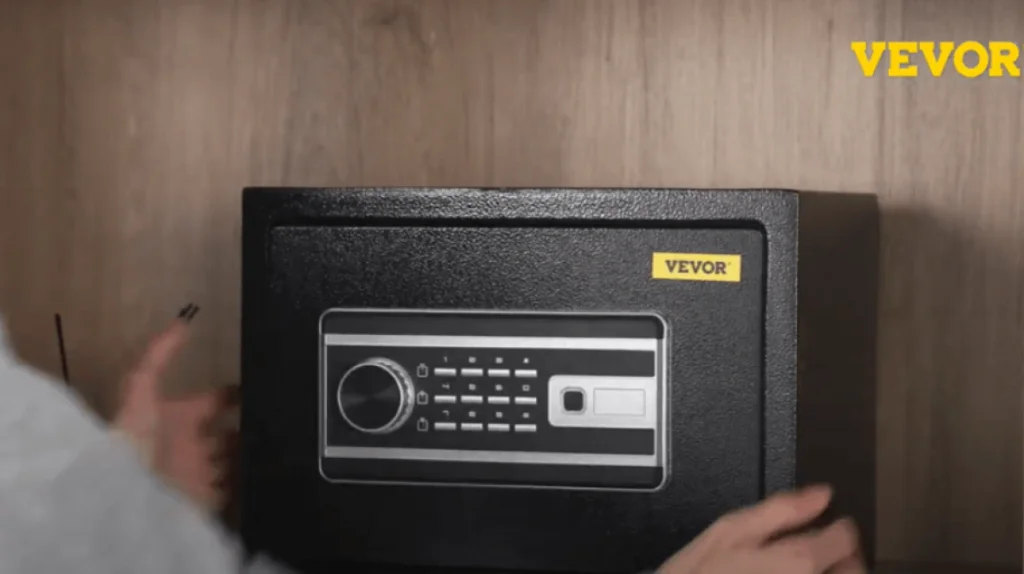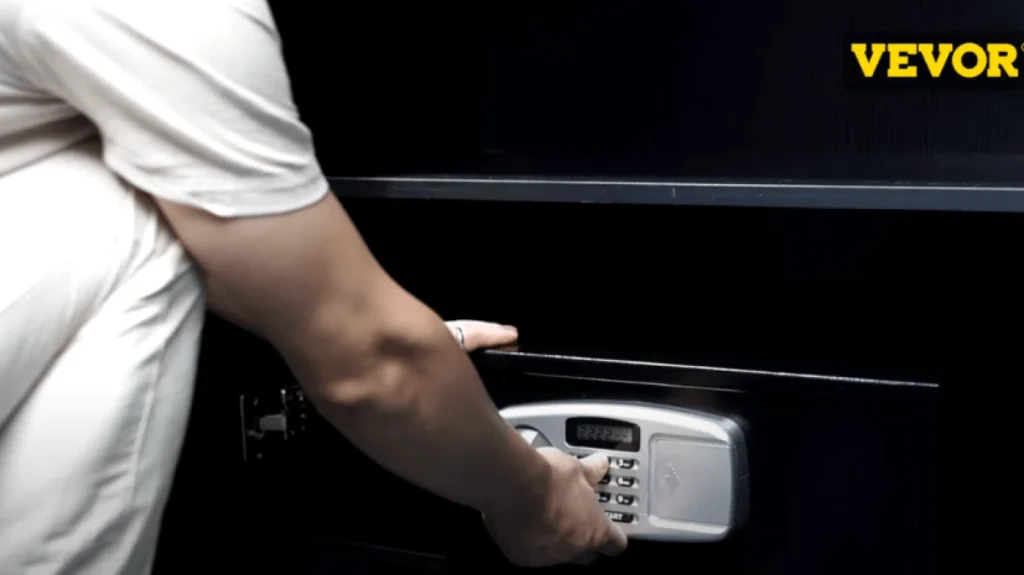Unforeseen damage is one of the most unfortunate things that can happen to anybody’s house. The loss becomes more straining if the homeowner’s precious or sensitive possessions succumb to the havoc. Something as sensitive as a safety firearm can even become a liability in such cases.
VEVOR’s double-door security safety box is one of those heavy-duty safes that will protect you from unnecessary losses in times of need. It can keep your jewelry and gun protected under a digital lock that is hard to crack.
However, taking care of a safe as per its maintenance standards is equally necessary to confirm the reliability of your investment. Our little guide to safe maintenance will help ensure your belongings are secure.
Why Safe Maintenance Matters?
You have made a purchase, and your locker is set to protect whatever you want to store inside it. But what about taking care of the locker? Here’s why safe maintenance is more necessary than you assume:
- Cost Saving: Having your equipment maintained regularly will save you a lot of money, as regular maintenance costs are only a fraction of the potential cost of a major breakdown.
- Prolonged Life: Regular safe maintenance will extend its life by several years, and the product quality will remain consistent throughout.
- 100% Efficiency: Routine surveys, cleaning, lubrication, and adjustments can help you detect the slightest possibility of forthcoming problems. By attending to these problems timely, you can ensure your locker is operating at 100% efficiency.
- Meeting Maintenance Standards: Although not a legal requirement, maintenance protocols of a machine are there for a reason. Most of them are usually devised in accordance with the Health and Safety Act. Moreover, the manufacturer establishes these standards to provide the optimum conditions for the machine’s high functioning.
Neglecting product maintenance not only poses a threat to the safe’s efficiency, reliability, and lifespan but also increases the risk of safety hazards. The likelihood of unexpected emergencies that can impede both workflow and finances also increases.
Five Safety Rules for Effective Safe Maintenance

If you are unsure of what to look for while performing a routine maintenance inspection, five safety rules will help you. You must ensure the following basic requirements to prevent wear of the product and related safety hazards:
Rule 1: Regular Inspections
It is important to check a safe periodically for signs of wear and tear. During your routine inspections, you must look for any indications of malfunction that might arise in the future. If everything appears to be functioning properly, have the unit cleaned and polished.
Rule 2: Lubrication Guidelines
Lubrication is necessary for increasing the efficiency and longevity of equipment. No matter how hard you try, a stuck safe will refuse to open like you are a burglar trying to break in. If you don’t want such problems to happen at the most inconvenient times, consult the manufacturer’s manual to check how often to lubricate a safe’s door.
Rule 3: Climate Control Considerations
The next thing is to ensure the placement of your safety locker in the right environment. The placement of the unit depends upon its construction material and the contents stored in it.
It is better to install a safe at a location where it does not come in contact with damaging factors like humidity, heat, flammable materials, or traffic. For instance, the optimum temperature for gun safety is about 70 degrees, and the humidity factor is 30 to 50 percent.
Rule 4: Electronic Components Care
Electronic safes operate entirely on batteries and electrical connections. Therefore, ensuring these components are functional because they can give in at the most crucial moments and cause a nuisance.
Rule 5: Security Code Updates
Security codes are the most overlooked part of safe maintenance and security. Change your security codes at least twice a year or more if you trust your memory. Try coming up with a new number every time, and don’t repeat any old passcode.
Maintenance Standards for Different Safe Types

Currently, the market has all kinds of safes, from traditional to smart ones. Each type comes with its unique maintenance standards and needs. Here are some common types of safes and tips on how to keep them:
Mechanical Safes
A mechanical safe has a dial that you rotate back and forth to the correct code. The wheels rotate with the dial, allowing a lever to release blocking elements.
- Inspect the hinges or the dial for damage or misalignment. Don’t use excessive force to operate the locks.
- Lubricate the mechanical components once or twice a year.
- Clean the interior for dust and debris, and ensure it is always safe and dry.
Electrical Safes
Electronic safes require you to type a passcode to access the locked components. Upon entering the correct code, a motor within the lock body releases blocking elements, pulling the bolt out.
- Inspect batteries regularly and replace them with high-quality batteries when needed.
- Inspect the unit and the hardware for signs of damage.
- If the safe has software or firmware, check for updates periodically.
- Ensure a humidity-free environment to prevent moisture from damaging its mechanisms.
Combination Safes
Combination safes have internal mechanisms featuring wheels that work much like mechanical dial safes. In order to open the safe, each wheel must align to allow a fence to drop into the gates and open the lock.
- Inspect the unit regularly and lubricate the moving parts, such as combinations and the door.
- Install the safe box in a place clean and dry to avoid debris buildup or rusting due to moisture.
- Don’t over-grease because that can attract dust and damage the safe box.
Gun-Safe Maintenance: A Specialized Guide
It is a no-brainer that firearm safes should be heavy-duty and secure. Moreover, it is necessary to keep these units well-maintained to avoid any potential risks. Here’s our little guide to gun-safe maintenance:
- Clean Regularly: The first thing is to make sure the safe remains operative and clean. Use a microfiber cloth and non-abrasive surface cleaner to avoid debris and dirt from building up.
- Grease Occasionally: Like every other type of safe, units meant for gun safety also require lubrication for smooth operation. Apply lubricant to bolts, hinges, sides, bottom, and top at least once a year. Don’t over-grease because that can necessitate replacement of parts, such as seals.
- Service Your Lock and Fire Seal: Regardless of the type, check your lock and fire seal for signs of wear and tear periodically. Broken locks or seals can compromise the functionality of the safe, increasing the risk of unauthorized access to the firearm.
- Keep an Eye on the Firearms: There is a high possibility that you might neglect the gun while taking care of the safe. It is preferable to store the guns in gunpowder so that they remain humidity-free. Moisture can provide a breeding ground for rust that can cast your firearm away gradually.
Quick and Easy Safe Maintenance Routine
Regardless of the type of safe box, safe maintenance requires consistency. Depending on how often you access it, maintain the safe once or twice a year by following these simple steps:
- Step 1: Wipe the exterior and interior with non-abrasive chemicals and microfiber clothes to ensure it is free from dust and debris.
- Step 2: Inspect the moving parts, clean them, and grease them as instructed in the manufacturer’s manual.
- Step 3: If your unit is wall-mounted, check the anchoring system for indicators of loosening or damage.
- Step 4: Check if the lock works fine, alter the passcode or the combination if it has been long due, and document the new password in a safe place.
- Step 5: For an electronic safe, check for the battery and replace it if needed.
- Step 6: In case of unusual sounds, a stuck door, or a stubborn lock, read the instruction manual or contact a professional for assistance.
Maintaining Your VEVOR Security Safe Box
VEVOR’s safe box is not only easy to install, but it also requires little to minimal maintenance.
- The durable structure of heavy-duty steel lasts longer than most safes in the market today. Moreover, its steel construction makes it considerably resistant to rusting and corrosion.
- Power-coated walls and carpeted interior of the safe box ensure that the inner components stay safe from humidity and wear and tear in case of an accident.
- Its exterior is highly resistant to stains, debris, and dirt build-up, so you would not have to spend a lot of your time cleaning it.
- The smart design with high-quality construction material requires you to lubricate the machine only annually.
Summing Up
Safe maintenance is the key to the longevity and efficiency of these boxes. When you store your valuable possessions inside a locker, it only makes sense that you want the locker to protect them. To ensure that, you must take care of the box’s placement, lubrication, and cleanliness.
If you want to explore your options in budget-friendly safes that require minimum maintenance, look no further than VEVOR’s product range. There are some amazing boxes that won’t have you fretting for service and repair every once in a while. The best thing about these safe boxes is that they are made of durable material and last up to several years.





